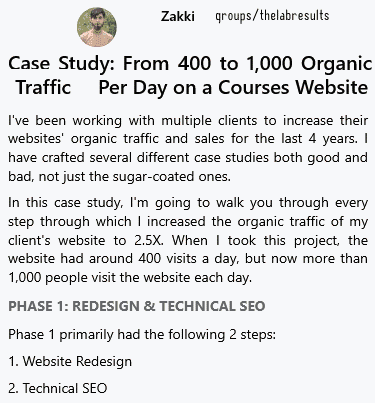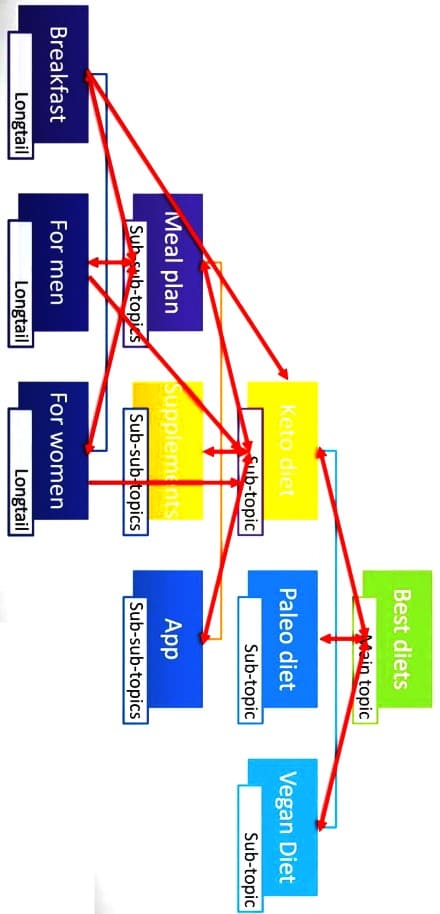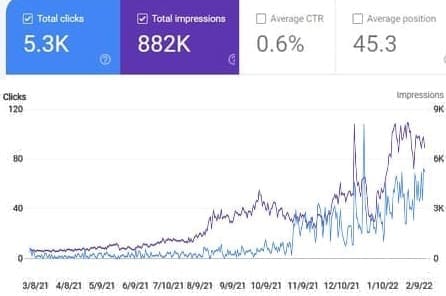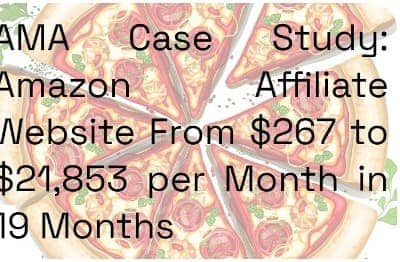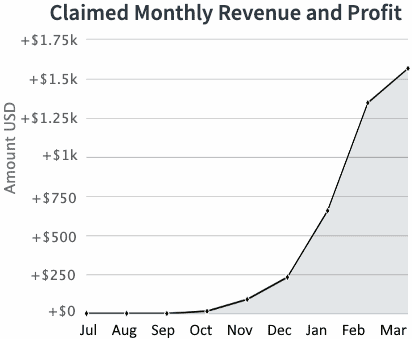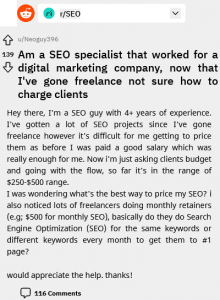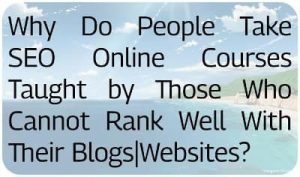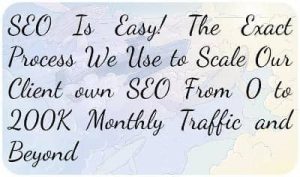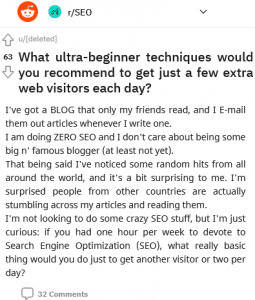Case Study: From 400 to 1,000 Organic Traffic Per Day on a Courses Website
I've been working with multiple clients to increase their websites' organic traffic and sales for the last 4 years. I have crafted several different case studies both good and bad, not just the sugar-coated ones.
In this case study, I'm going to walk you through every step through which I increased the organic traffic of my client's website to 2.5X. When I took this project, the website had around 400 visits a day, but now more than 1,000 people visit the website each day.
Phase 1: Redesign & Technical SEO
Phase 1 primarily had the following 2 steps:
1. Website Redesign
2. Technical SEO
📰👈
1. Website Redesign
When I started working on this website, it was mainly built for generating sales from Ads and looked something like this: https://ibb.co/Q8RWXh5
The website had many SEO issues and from the design point of view, it was old-fashioned. Therefore, I asked my agency to redesign the website completely with a better loading speed and user experience. The reason I put a lot of effort into User Experience (UX) is because I consider it one of the dominant ranking factors.
My agency completed the website redesign and now it looked something like this: https://ibb.co/VLKXgt6
Pretty Amazing Right?
2. Technical SEO
While my agency was working on the redesigning, I tackled the technical SEO errors. I had my team on finding all the possible technical errors and here are some significant errors that we found:
404 Pages: There were some 404 pages on the website that I either fixed or redirected.
There was no blog on the site: The blog posts URLs were something like this; abc.com/how-to-do-. It was a difficult job to recognize the blog pages and courses pages. I created a separate blog for posts and moved all the blog posts there. Now the URLs of pages were something like this; abc.com/blog/how-to-do-this. Now abc.com/blog listed all the blog posts. Have a look: https://ibb.co/ssWpsv6
There was no courses page: Just like the blog, there was no course page either. So, I created a courses page as well. All the courses were listed here and the URL structure of the courses was changed to this: abc.com/course/course-name. Before any changing, the URL was, abc.com/course-name.
There were no course categories: In courses niche, the categories play a vital role in generating organic traffic and sales. Therefore, it was critical to have pages on course categories. There were more than 30 courses on the website so, I created 8 category pages for them.
A big one. The website was being Accessible from both HTTP and HTTPS versions: So I redirected the non-SSL version of the website to Secure Sockets Layer (SSL).
So these are the issues I found and resolved in this phase:
1. The Design was old fashioned
2. It wasn't user friendly
3. It had a slow loading speed
4. There was no separate blog
5. There were no Categories
6. There was no course directory page
7. 404 Pages
8. HTTPS pages had internal links to HTTP
9. Pages had internal links to broken pages
10. Pages were accessible from both HTTP and HTTPS versions
11. Pages were linking to HTTP images
It took us two months to redesign the website and identify/fix the technical issues on the website.
Phase 2: Keywords Research & Content Optimization
Even though the website was updated to the new design and was made completely error-free, our job was far from complete. All the courses and blog posts were not targeting any keywords as the keywords were randomly put in the content. Moreover, the content wasn't of the best quality, especially the blog posts. So, I decided to divide this phase into 2 steps. Keywords Research and Content Optimization.
1. Keywords Research:
There were 35 courses and 70-80 blog pages that needed attention. So I had my team do the keywords research for all these courses and blogs. Ahrefs platform helped a lot in identifying the relevant keywords. The Keywords research was a tricky part here because the blog posts were already there. Therefore, we had to find the keywords relevant to the already existing posts
The normal cycle goes like this;
Keywords research -> Creating Content
But we were doing it like this,
Content already exists -> Keywords research -> Content Optimization
Note: I don't believe in keyword stuffing or putting the keywords randomly in the content. However, I do believe that providing Google with a clear topic to rank the page for is really helpful.
2. Content Optimization
When the keywords research was completed, I asked my writer to do the magic. She took all the keywords and blog posts and converted them to a quality piece of content.
PS: Our aim was not to only optimize the posts with keywords, but to improve the content quality as well. As I already mentioned that the content wasn't of the best quality, so we had to work on improving it because we all know that CONTENT IS KING!
We also optimized the content of course pages with the keywords and improved the quality of content.
Also, we added the content on the course category pages because they are an important part in generating sales-oriented traffic.
Things I did in this phase:
1. Keywords Research for the existing blog posts and courses
2. Optimization of the content with keywords
3. Updating the content Quality of courses and blog posts
4. Adding content to the course category pages
Phase 3: Ongoing SEO Campaigns
Now that all the website was updated to a new design, was technically sound, and the content was of high quality, our Job was to run the SEO campaigns regularly and look over the strategy and make sure everything is going fine.
In the ongoing campaigns, these were the things we mainly did,
1. Link Building
In the link building, we focused on guest posts only through outreach because the website was already having good links authority. Once again Ahrefs platform helped us identify the competitor's links.
The monthly budget for the links was around $500 and we acquired around 10 links in this budget.
2. Content Updation
The websites that update their content regularly, tend to generate more organic rankings and traffic, That's what I believe in.
Keeping this in mind, I kept on adding new content to the website and kept updating the already published one. It helped in the growth in real-time.
3. Making sure pages are being indexed
We made sure that the new pages that were being published were indexing. There's no point in doing all the above efforts if the pages won't index. Right?
4. Making sure there's no new technical error
Working on different clients' websites, I've noticed one thing that a technical error can occur anytime on the website. So, you should be doing the technical audit regularly, at least 1 time in a month and sometimes even sooner if your growth is stuck at a point or your rankings are getting down.
RESULTS
This is where the website stands right now after all of these efforts and hard work.
Ahrefs Ranking Keywords: 24k
Screenshot: https://ibb.co/Rz6mpB5
Analytics: 1,000+ Daily Traffic (When I started working on it, the traffic was around 400 per day)
Screenshot: https://ibb.co/LxcnBCQ
PS: The regular fluctuation in the analytics is because the traffic of the website is down on weekdays because people usually do this kind of research in the office timings.
PS: I can't reveal the website link right now as it's confident. Also the website is earning really handsome amount of $$ but I can't disclose that as well.
40 👍🏽5 💟45
14 💬🗨
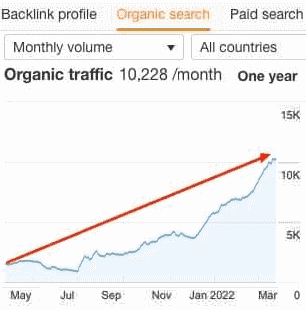
SEO Case Study for Affiliate or AdSense Pub: How I Increase Organic Traffic by 900% in 6 Months
SaaS SEO Case study: 1 Mil to 6.4 Million Monthly Organic Traffic
An SEO Case Study Improved 30 Percents of Prev Traffic in 3 Months on an eCommerce Website
SEO Case Study: Keywords Research and Keyword grouping; Target: B2b and B2C in the US and Canada
Prioritized Silo or Interlinking Case Study: 0 to 30K Visits a Month in 6 Months
Affiliate Marketing Case Study Earned from an Aged Domain ROI $10k Valuation $35k
A Case Study of a Commentator Inherited a Dumpster Fire of a Website and Made It Work
AMA Case Study: Amazon Affiliate Website From $267 to $21,853 per Month in 19 Months
19 Ultra Beginner Tips to Grow Website Traffic
102 Best SEO Tips to Help You Drive Traffic This Year: Do Keyword Research, Hire Writers
